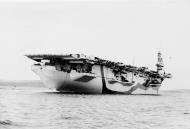Originally laid down as the 11,900 ton C3-S-A2 type freighter the SS Mormacpenn for the US operator Moore-McCormack Line. Her keel was laid on May 15th 1941 at the Ingalls Shipbuilding Corp. Pascagoula, Mississippi as Ingalls hull number 294, Maritime Commission hull number 161.
The Mormacpenn was purchased by the US navy while still under construction and was launched May 22nd 1942 as AVG-8, USS Block Island. This name was cancelled however when it was decided that AVG-8 was to be transferred to the Admiralty on loan under Lend/Lease arrangements. AVG-8 was completed on December 31st 1942 and was delivered to the US Navy in Pascagoula on January 9th 1943. She was transferred to Royal Navy custody on the same day, her US designation becoming BAVG-8, (the 'B' indicating British) on July 15th this was further changed to CVE-8.
BAVG-8 was originally to become HMS 'Trailer' but this was changed in order to continue the name of the 'H' class destroyer HMS 'Hunter'; AVG-8 was commissioned into the Royal Navy at Pascagoula on January 11th 943 as HMS Hunter (pennant number D80), under the command of Captain H.H. McWilliam RN. She was the sixteenth RN ship to bear the name.
On completion of storing and manning ship HMS Hunter commenced her post-build trials in the West Indies from January 31st 1943. She was operational by the end of February and made her first Atlantic crossing operating as a ferry carrier, sailing with the 22 ship convoy UGF6 from Norfolk, Virginia to Casablanca, departing Hampden Rhoades on March 5th 943. At Casablanca the ship unloaded US aircraft and stores before sailing for the UK.
On reaching Gibraltar Hunter embarked a detachment of Swordfish aircraft of 813 naval air squadron from RN Air Section North Front on March 29th, these aircraft were to operate anti submarine patrols from Hunter until the second week of April returning to North Front when she continued on to the UK. HMS Hunter arrived in Dundee, Scotland on April 12th 1943 where she entered a dockyard to commence alterations to bring her to RN standards; on completion she began a work up period as a fighter carrier in the Clyde area.
On July 6th Hunter embarked the 9 Swordfish and 6 Seafires of 834 naval air squadron from RN Air Station Machrihanish to work up in preparation for operations in the Mediterranean. On completion of working up the ship sailed for Malta escorting a convoy to Gibraltar on the first leg of the journey, arriving there on August 9th. Here 834 naval air squadron disembarked to RN Air Section North Front, Gibraltar; 6 of her Swordfish were to operate ashore from here until October 1st conducting anti submarine patrols as 834 'Z' squadron. The main body of 834 re-embarked from RN Air Section North Front on August 28th along with 899 naval air squadron; this brought Hunter's embarked strength to 3 Swordfish and 20 Seafire L.IIc (6 from 834 naval air squadron's fighter flight and 14 from 899 naval air squadron). After storing ship HMS Hunter continued on to Malta, arriving there on September 5th.
At Malta Hunter was allocated to Force 'V' the covering force for the allied invasion of Salerno, Italy, operation 'AVALANCHE' 9 - 12 September 1943. Part of her preparation involved 834 naval air squadron's 3 Swordfish & 6 Seafires being transferred to HMS Battler on September 7th.
For this operation Hunter was in company with the assault CVEs Attacker, Battler, and Stalker, along with the maintenance carrier Unicorn making a rare operational contribution; these five carriers were to provide fighter cover for the landings. It was intended that a constant presence of naval air cover would be maintained over the landing sites, up to 20 aircraft aloft at a time. The attrition rate was high, and the CVEs required addition aircraft to be transferred from the Fleet Carriers of Force H, the main attack element of 'AVALANCHE', in order to continue operations at this level (Force H withdrew to Malta on the 11th, being nearly out of aircraft itself by this time). Once the airfield at Paestum was under Allied control as many serviceable fighters as could be mustered were put ashore to operate from there. Each carrier provided what serviceable aircraft hey could muster to operate ashore on the 12th; Hunter managed 5 aircraft. After disembarking these fighters the force withdrew to Palermo to replenish. During the four days on station the carriers, which all flew Seafires, launched a combined total of 713 sorties, providing more than half the allied air coverage over the beach head. The carriers were back on station by the 16th and the detached aircraft were recovered.
Force 'V' was to disband on the 20th of September, the majority of the CVEs returning to the UK to refit and allow naval air squadrons the opportunity to receive replacement aircraft and aircrews. Before their departure a reorganisation of resources was undertaken which resulted in what remained of 807 and 808 naval air squadrons transferred from HMS Battler to HMS Hunter on the 17thl; Battler was not returning to the UK but was assigned to the Eastern Fleet for duties as a trade protection carrier.
HMS Hunter sailed for Dundee to undergo repairs at the end of September, disembarking the men and aircraft of 807 and 808 naval air squadrons to RN Air Station Burscough, Lancashire on October 6th, and 899 to RN Air Station Ballyhalbert, Northern Ireland on the 13th.
he ship was due to complete her repairs in Dundee in early December 1943 but suffered damage to the Hangar deck plating while she was being undocked on the 3rd. This damage was taken in hand at a dockyard on the Clyde, Hunter arriving there four days later. It was to be mid January before Hunter was ready to resume active service, re-embarking 807 and 808 naval air squadrons from RN Air Station Burscough on the 20th and 21st to carry out Bombardment spotting and target reconnaissance exercises. On completion of exercising Hunter disembarked 808 squadron to RN Air Station Lee-on-Solent, Hampshire, on February 25th to re-equip; some of this unit's aircraft were retained aboard Hunter, and were absorbed into 807 to bring its strength up to 20 Seafires. The ship then proceeded to the Orkneys, arriving at the anchorage at Scapa Flow on March 1st to begin working up.
Her work up completed HMS Hunter sailed for the Mediterranean on May 14th. Her next operation was the allied invasion of Southern France, operation 'DRAGOON'. Between August 15th & 27th 1944 HMS Hunter joined eight other CVEs in Task Force 88 as part the covering force for operation 'DRAGOON'. The CVEs Attacker, Emperor, Khedive, Pursuer and Searcher formed Task Group 88.1 while Hunter, Stalker, and US CVEs TulagI and Kasaan Bay formed Task group 88.2. For this series of operations Hunter's 807 squadron was equipped with 22 Seafire L.IIIs, 1 Seafire LR.IIc and 1 Swordfish.
On the 21st Task group 88.2 withdrew to Maddalena, Sardinia, for replenishment after flying 219 sorties; Hunter and Stalker were back on station on the 24th. After flying a further 88 sorties Hunter and Stalker withdrew to Sardinia on August 27th. Over the 13 days of operation 'DRAGOON' 807 naval air squadron completed a total of 307 sorties; 36 dive-bombing, 56 armed reconnaissance, 96 CAP (combat air patrol), 48 TARCAP (target area combat air patrol), 16 PR (photographic reconnaissance) and 55 escort missions for the loss of 4 aircraft and 11 deck landing accidents. After storing ship Hunter sailed for Alexandria, arriving there on September 2nd.
Hunter next put to sea in company with Searcher, Pursuer and Khedive on the 9th for Operation 'OUTING', a short series of anti-shipping strikes in the Aegean Sea, returning to Alexandria on the 15th. A second series of strikes were carried out in Operation 'OUTING II' between September 30th and October 11th. During this period of operations 807 naval air squadron flew 135 sorties including CAP, TARCAP, dive-bombing, and shore bombardment spotting for the Cruiser HMS Aurora. After withdrawing on October 11th Hunter disembarked 807 naval air squadron to RN Air Station Dekheila, Egypt in preparation for her return to the UK for a short refit. Hunter in company with Attacker left Alexandria on October 31st, arriving in the UK on November 10th.
Hunter was re-allocated to 21 ACS (21st Aircraft carrier Naval air squadron) on November 29th 1944, 21 ACS was a part of the recently formed East Indies Fleet and was to eventually comprise of the CVEs Ameer, Attacker, Emperor, Empress, Hunter, Khedive, Pursuer, Searcher, Shah, Stalker, and Trouncer. Hunter proceeded to Malta to begin another refit which started on December 6th to prepare her for tropical operations. Her modifications and refit completed Hunter sailed for Trincomalee, Ceylon on February 21st 1945; the ship was reunited with 807 naval air squadron on March 6th when they re-embarked from RN Air Station Dekheila before transiting the Suez Canal.
Hunter arrived off Ceylon on March 20th and disembarked 807 to RN Air Station Katukurunda; she spent the next month working up with 21 ACS and 807 in preparation for Operation 'DRACULA', the reoccupation of Rangoon, which began on April 30th. Hunter, Emperor, Khedive and Stalker operated off Rangoon providing air strikes and support for invasion troops until May 4th before moving south to strike the Tenasserim coast on May 5th and 6th.
On the May 10th shortly after returning to Trincomalee after 'DRACULA' operations Hunter, Khedive, Emperor and Shah were ordered to sea at short notice. The carriers were tasked to provide air support for the 3rd Battle Squadron as it swept across the Andaman Sea hunting for the Japanese Cruiser Haguro codenamed Operation 'DUKEDOM'. The Haguro was one of the last surviving major Japanese warships, and she had been reported as being having put to sea. HMS Emperor was the only carrier to engage the Haguro. She was carrying HMS Shah's Avengers, these having been transferred after Shah's catapult went unserviceable - a type she was not equipped to support. A single Avenger located and attacked the Haguro but with little success. She was later sunk by the Battle Squadron's destroyers off Sumatra while attempting to return to Singapore.
Hunter did not see any further offensive operations before the end of the war; her next major operation was as part of Vice Admiral Walker's force [Nelson, Ceylon, Hunter, Attacker, 3 Destroyers and 3 infantry Landing Ships)] which sailed from Rangoon on August 27th 1945, headed for Penang to accept the Japanese surrender of Malaya. The force reached Penang on the 28th; the surrender ceremony taking place on September 2nd. On completion of this operation Hunter joined CVEs Ameer, Khedive, Emperor, Empress and Stalker for Operation 'ZIPPER', the re-occupation of Singapore. Hunter was one of four CVEs to enter Singapore harbour on September 10th 1945, Ameer and Empress remaining at sea. The surrender ceremony took place on September 12th.
HMS Hunter returned to the UK, leaving Singapore on October 9th she arrived at Belfast on October 30th to disembark 807 naval air squadron to the RN Air Station there. She proceeded to the Clyde the next day where she was transferred to the Rosyth Command to begin initial de-storing in preparation for her return to the US authorities. On November 28th she left the Clyde bound for the RN Dockyard at Portsmouth to complete her de-storing and equipment removal. HMS Hunter left the UK for the last time on December 12th 1945, sailing from Portsmouth bound for the US Naval Dockyard at Norfolk, Virginia.
CVE-8 was returned to US Navy custody at Norfolk on December 29th 1945, and she was stricken for disposal on February 26th 1946. CVE-8 was sold into merchant service with the Holland America Line on January 17th 1947 and entered service on November 17th 1948 as the SS Almdijk; she was renamed Almdyk in 1953. Sold for breaking on October 27th 1965 she arrived in Valencia, Spain on November 2nd 1965 to be scrapped.
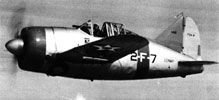
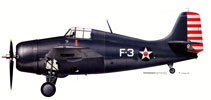
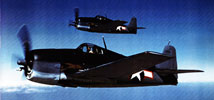
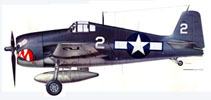
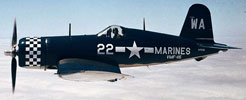
 Editor for Asisbiz: Matthew Laird Acred
Editor for Asisbiz: Matthew Laird Acred







